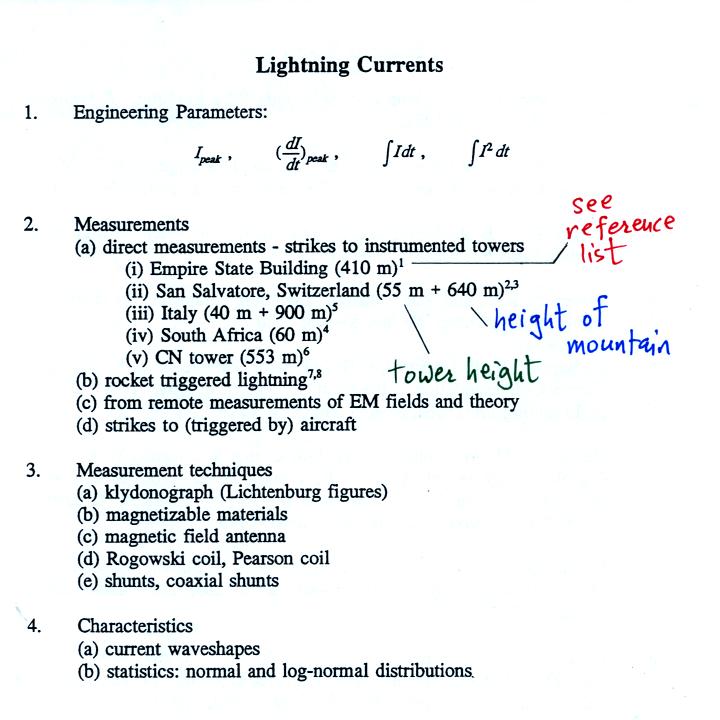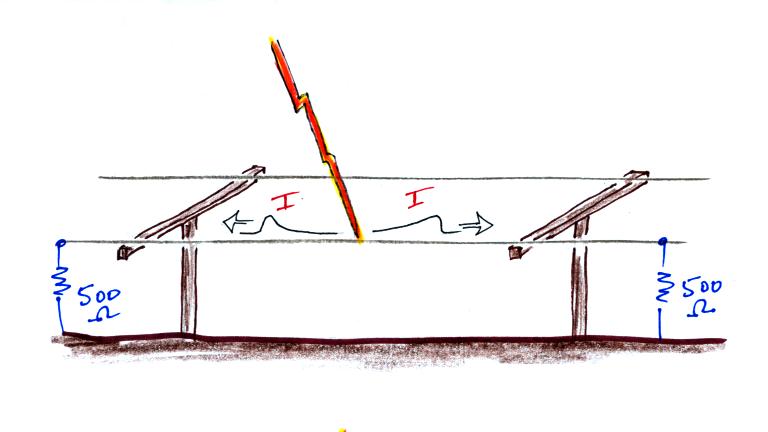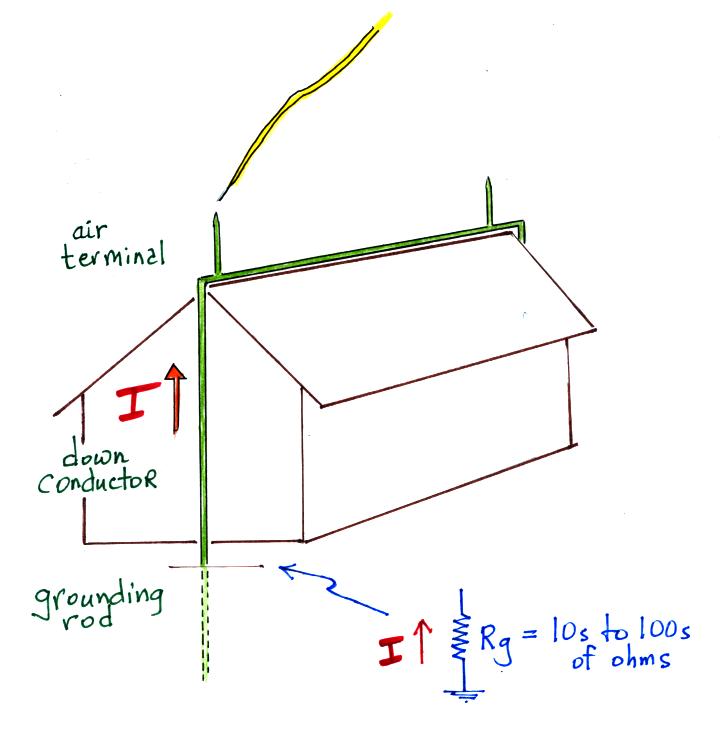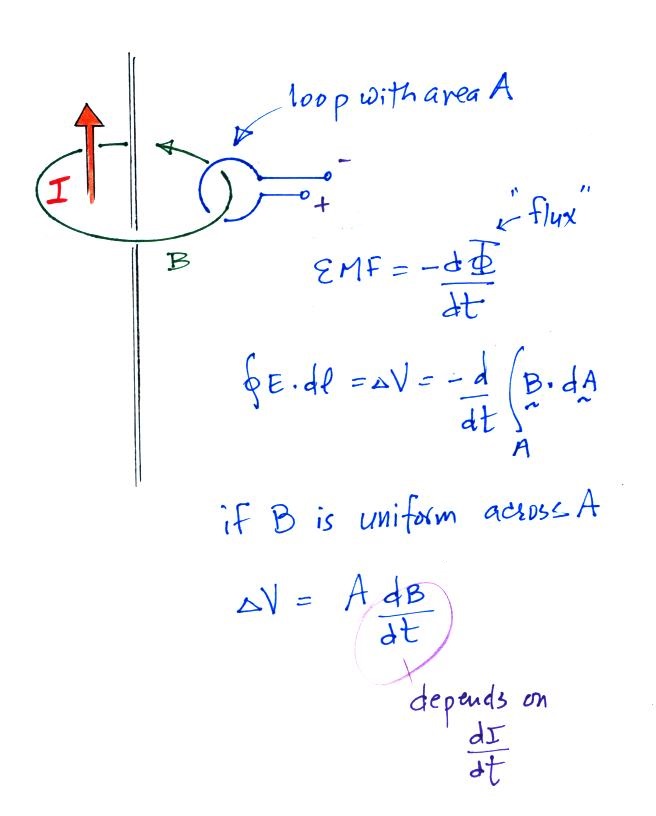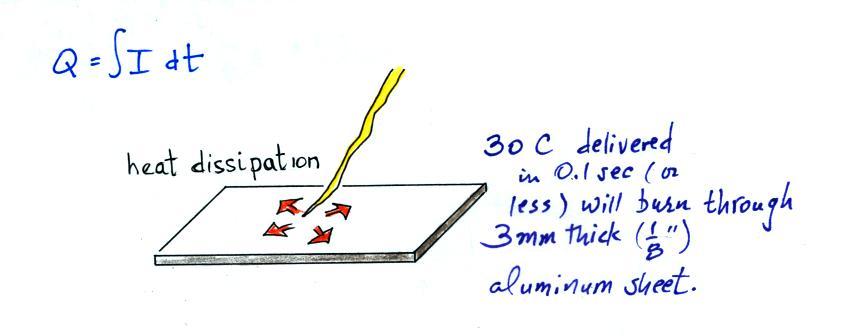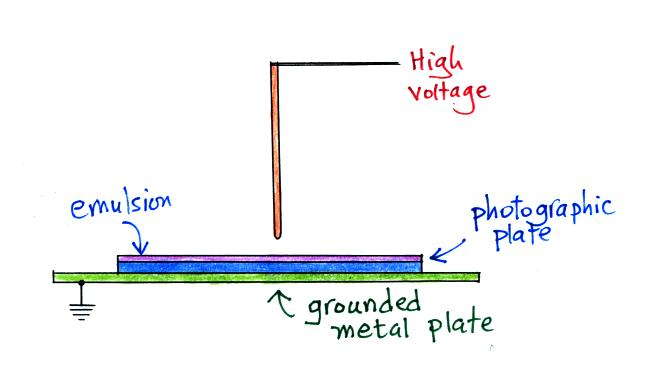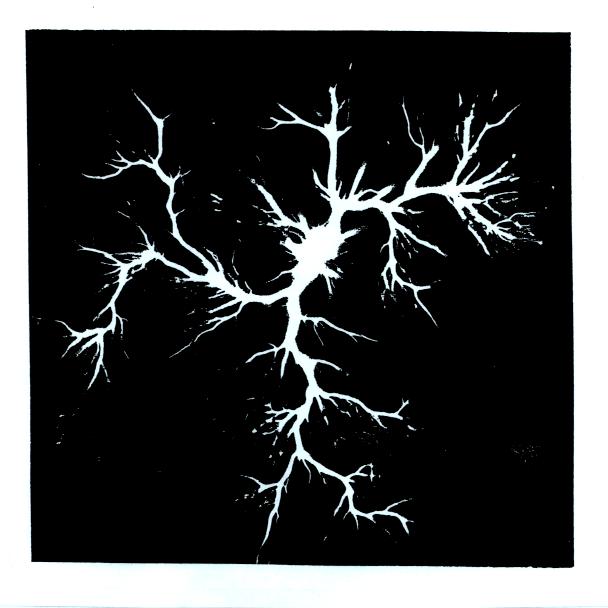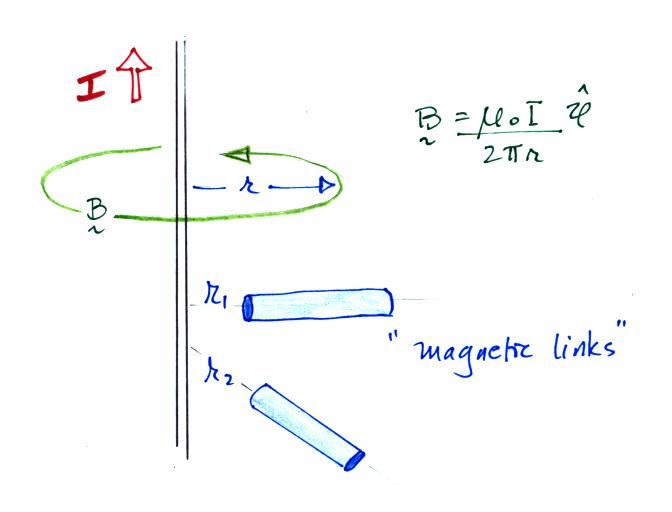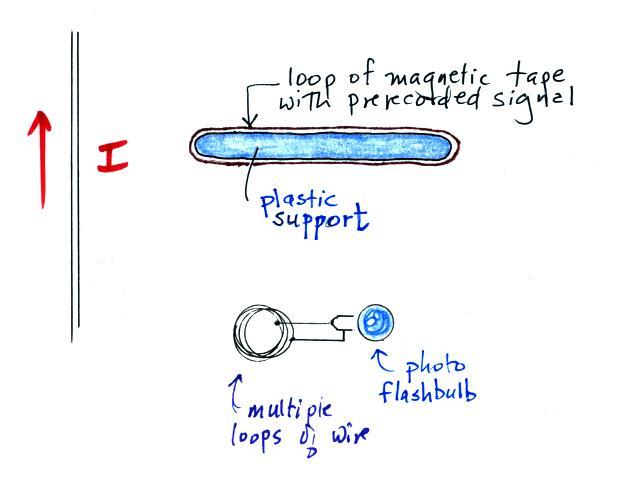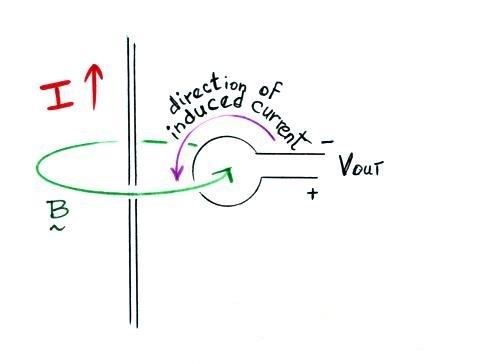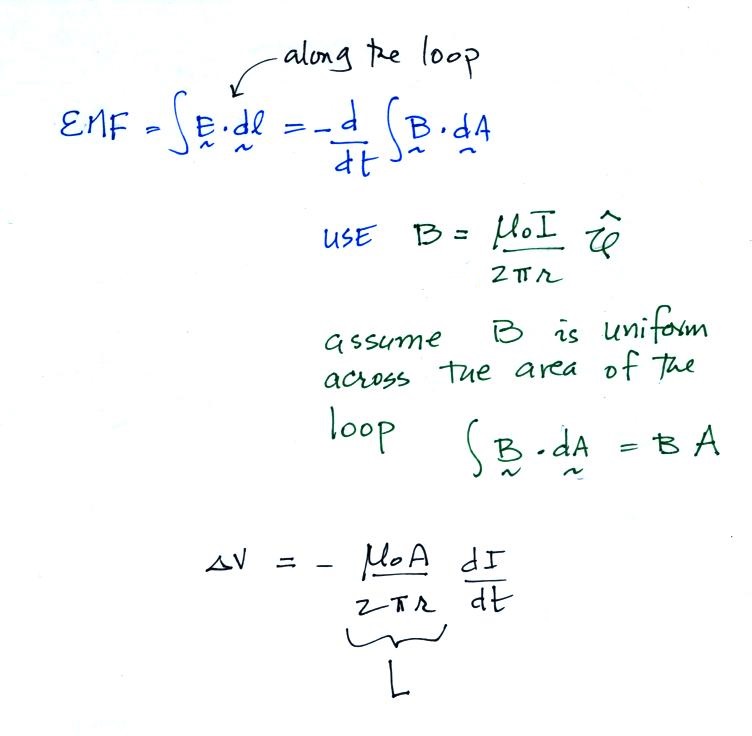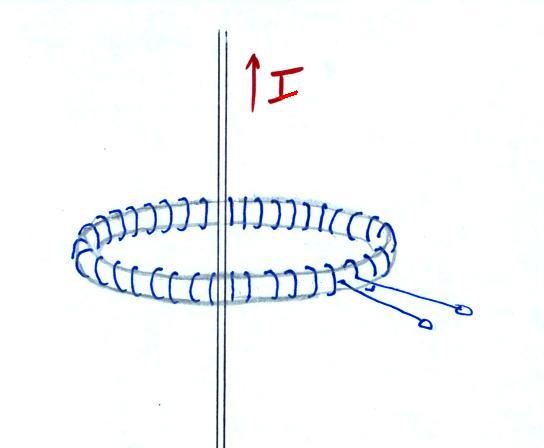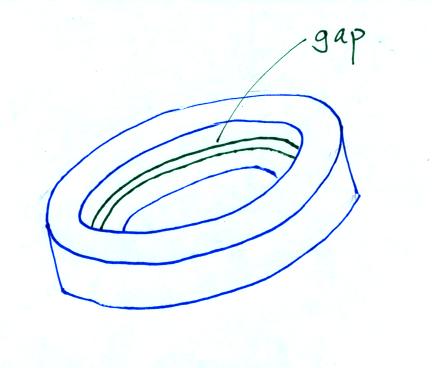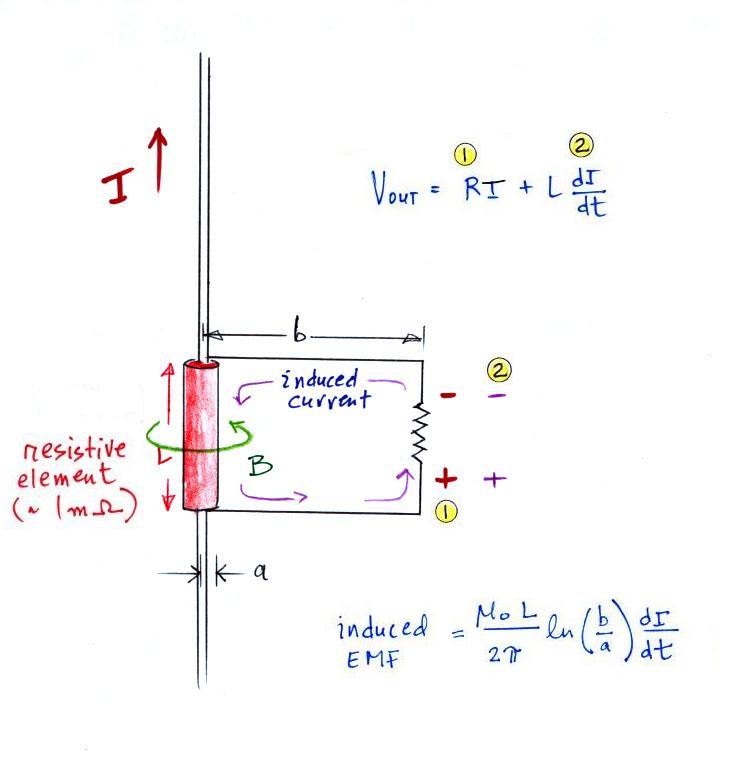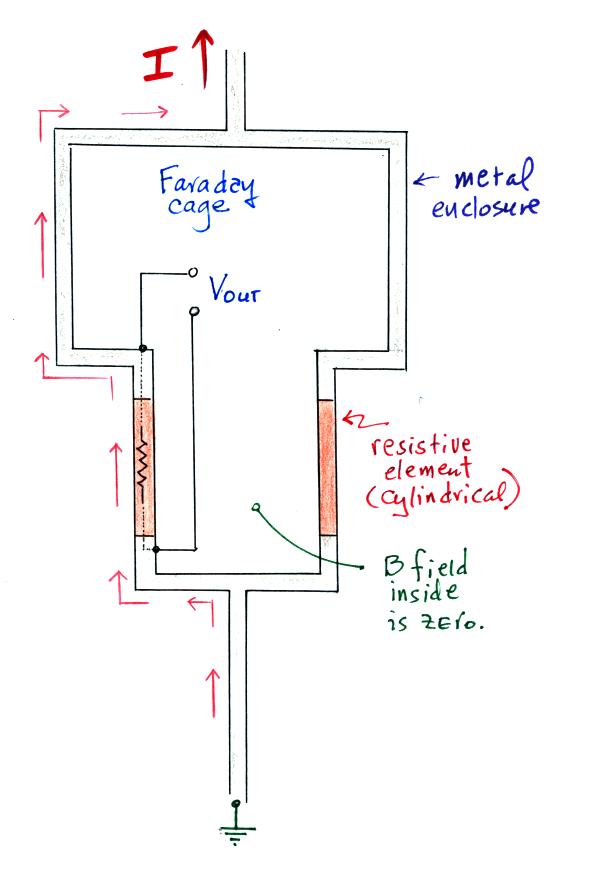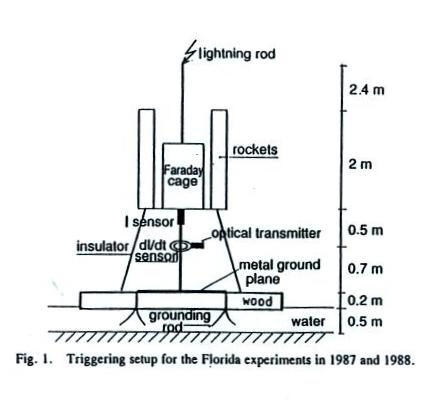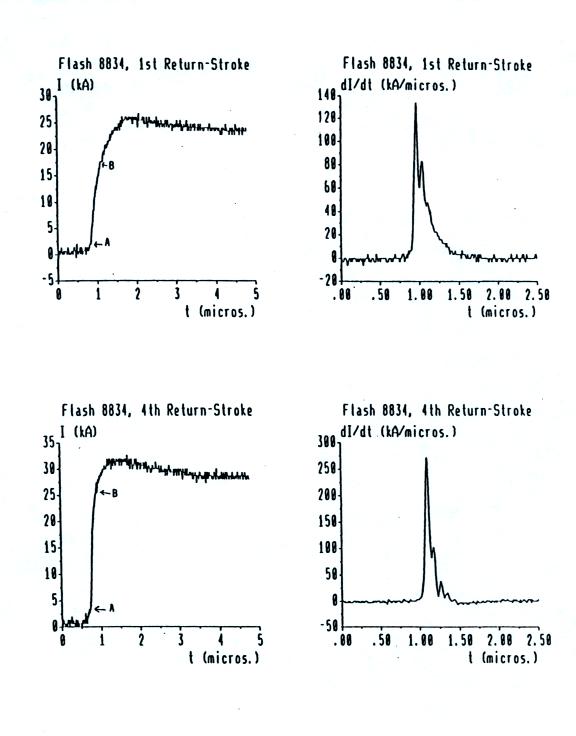
We'll finish
this lecture with a quick look at some of the
results from some of the triggered lightning
experiments and then compare those results
with data from some of the older lightning
current measurements during lightning strikes
to instrumented towers made in Switzerland and
Italy.
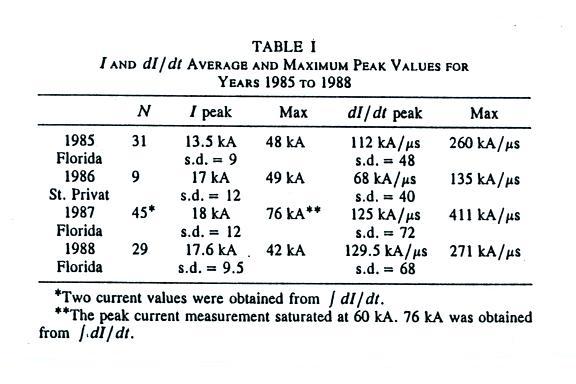
This first
figure gives mean peak I and peak dI/dt values
from rocket triggered lightning experiments
conducted in Florida (at the Kennedy Space
Center) and at the Saint Privat d'Allier
station in central France (where the rocket
triggered lightning experiments were first
conducted). With the exception of the
1986 St. Privat dI/dt data (where there
appears to have been a shielding problem with
the dI/dt sensor), the mean values from the
different summer field experiments are
generally in pretty good agreement. The
overall average peak I value is 16.6 kA and
the average peak dI/dt value (France 1986 data
omitted) is 122 kA/μs. Remember that
return strokes in triggered lightning are
thought to be comparable to subsequent return
strokes in natural lightning.
Lightning current parameters such as peak I
and peak dI/dt are often log-normally
distributed. Data that are log-normally
distributed should fall in a straight line on
a cumlulative probability plot.
Cumulative probability distributions of peak I
and peak dI/dt from the Florida 1987 and 1998
experiments are shown below.
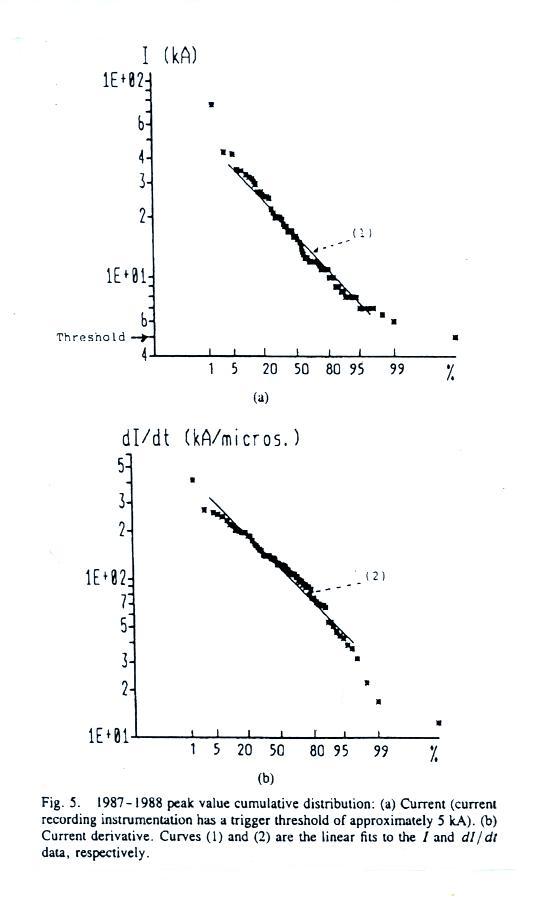
Parameters
from these distributions are summarized in the
table below together with parameters from the
Swiss and Italian tower measurements.
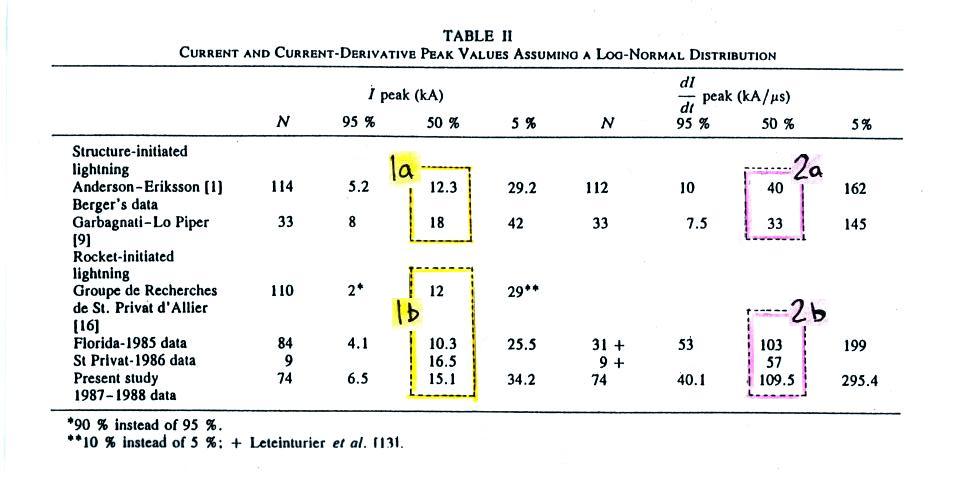
Generally the
50% values (the median) of peak I from the
tower measurements (1a) compare very well with
the peak I values from the rocket triggered
lightning experiments (1b).
The sensors and recording equipment used
for the tower measurements in Switzerland and
Italy probably didn't have fast enough time
resolution to accurately measure peak dI/dt
values. The data in the table above seem
to reflect this. The tower derived
measurements (2a): 40 and 33 kA/μs
are significantly lower than the values
obtained during the triggered lightning
experiments (2b): 103 and 109.5 kA/μs
(we disregard the 57 kA/μs
value from the St. Privat 1986 campaign).
We will note that indirect estimates of peak
return stroke dI/dt derived from remote
measurements of radiated fields, which will be
the subject of our next lecture, agree well
with direct measurements in rocket triggered
lightning.
Numbered references cited at the beginning
of today's notes (full citations can be
found in the Articles
folder)
Again, the links above will take you online
e-journal copies (usually PDF files) of the article
that have been accessed via the UA Library; they may
not be available to you if you try from an
off-campus computer.
